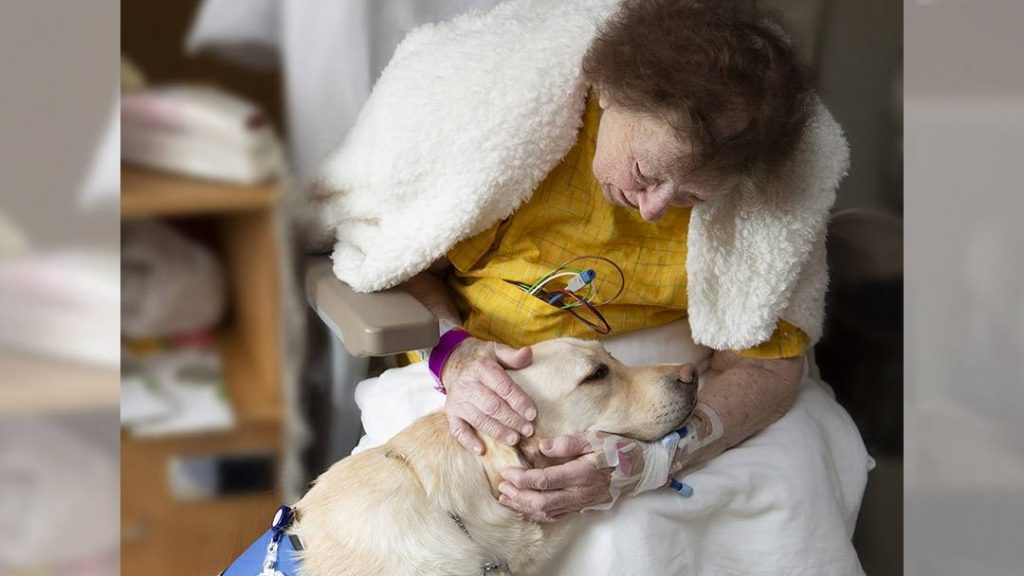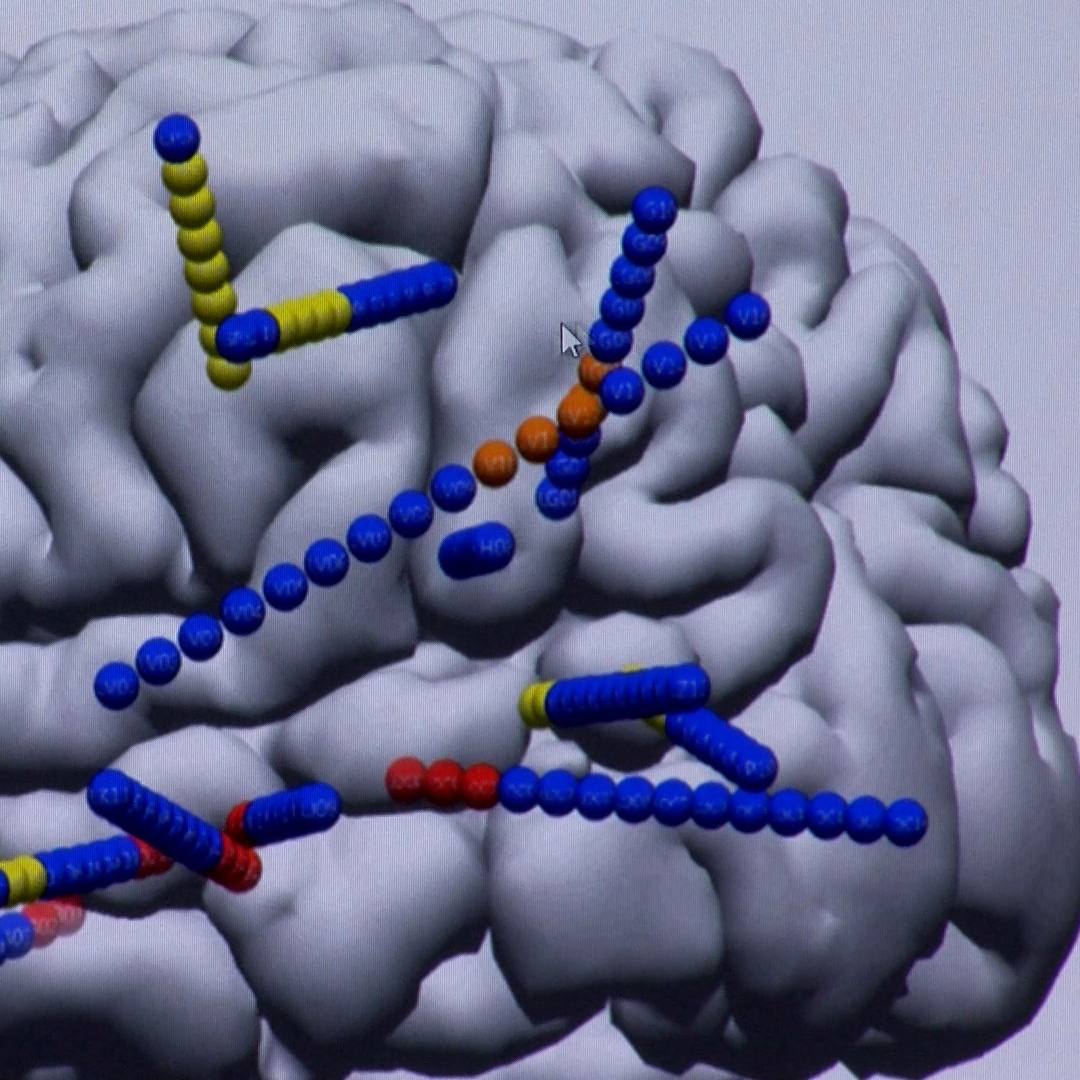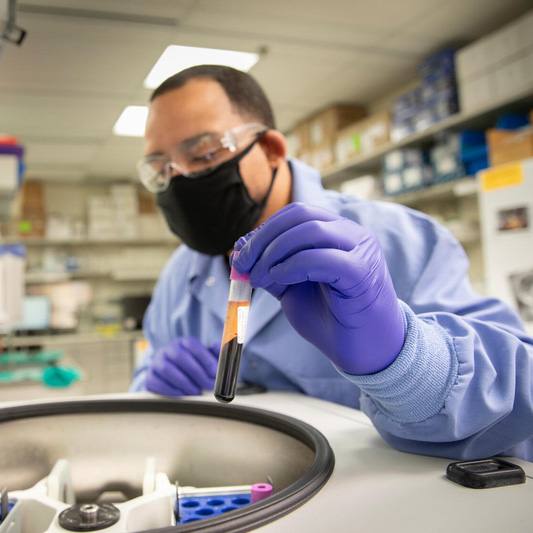-
Featured News
Sharing Mayo Clinic: A welcome dose of furry comfort

With her warm brown eyes, big floppy ears and calming presence, Luna, a trained facility dog, spends her days bringing cheer to Mayo patients.
Receiving news of a medical diagnosis can be overwhelming and frightening. Spending a significant amount of time in and out of the hospital, meeting with physicians and receiving treatments may lead to feelings of disconnection from home. Therapy and facility dogs at Mayo Clinic Health System are ready to help. Their calming presence and friendly demeanor serve to ease stress and soothe jangled nerves.
Lunar III, or Luna for short, is one of those helpful canines. A Labrador retriever with light golden fur, warm brown eyes and big floppy ears, Luna is a facility dog who works at Mayo Clinic Health System in La Crosse Wisconsin. She also travels to clinics in Onalaska, Sparta and Tomah, Wisconsin.
There are two levels of training dogs can complete to provide support for patients. They can become either therapy dogs or facility dogs. Therapy dogs must pass testing criteria to ensure that they can behave in various settings, and they often are used for comfort visits with patients. Facility dogs complete a two-year advanced training program and can respond to more than 40 commands. They are consistently reliable in public settings, and can function in environments with many distractions while still maintaining focus on their work.
"As soon as she walks in, it's clear that both patients and staff are friends with Luna."
Lisa Morgan
Luna graduated as a facility dog from a specialized training program in Ohio. She now performs a wide variety of jobs in her work at Mayo Clinic Health System. Luna's daily tasks range from carrying a basket of chocolates through the hospital to providing comfort during treatments. She assists patients with exercise, motivation, positive distraction, opening and closing drawers or doors, retrieving items, and pulling pediatric patients on scooter boards.
Luna regularly visits patients in Cardiac Rehabilitation, along with her handler, Lisa Morgan, a supervisor in Rehabilitation Services. "As soon as she walks in, it's clear that both patients and staff are friends with Luna," Morgan says. "The smiles on patients' faces show that they know their canine friend is there to help. Most people call her by name and ask me if they can pet her."
While she's in Cardiac Rehabilitation, Luna often spends time with patients receiving enhanced external counterpulsation, or EECP. The treatment is used for angina, a type of chest pain, and some people require EECP sessions multiple times a week for many weeks. The frequency and duration of the treatments can get lonely and tiresome. Luna helps ease negative emotions patients may be feeling by allowing them to pet and talk to her.
"Luna is a great comfort to patients receiving EECP treatments," Morgan says. "It can be an uncomfortable process, and she provides much-needed distraction and relief."
"Whether patients and staff know Luna or have just met her for the first time, it's obvious that she brings light to any room she enters."
Lisa Morgan
Luna also visits the Cancer Center, where she always receives a warm welcome. "Patients in the Cancer Center may have just received upsetting news or may be receiving treatment, but Luna's presence seems to improve their spirits," Morgan says. "They smile when Luna places her head on their lap, and they share stories about the pets they have at home."
Similar to her time in Cardiac Rehabilitation, Luna provides soothing comfort and distraction during medical treatment.
"Whether patients and staff know Luna or have just met her for the first time, it's obvious that she brings light to any room she enters," Morgan says. "She knows how to make patients' experiences at Mayo Clinic Health System even more extraordinary."
NOTE: A version of this story previously was published in Hometown Health.
HELPFUL LINKS
- Learn more about pet therapy.
- Read about the potential wellness benefits of having a pet.
- Explore Mayo Clinic Health System.
- Request an appointment.
Related Articles







